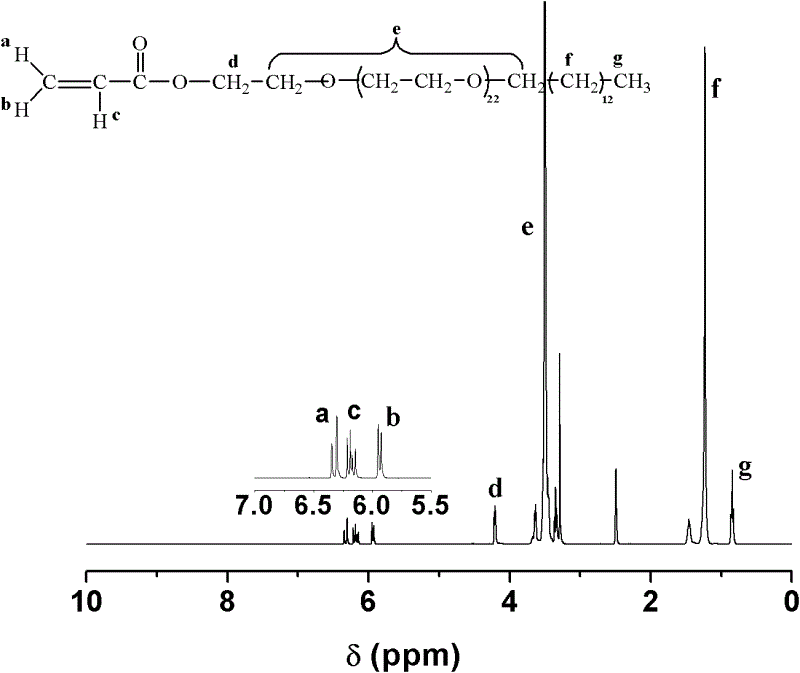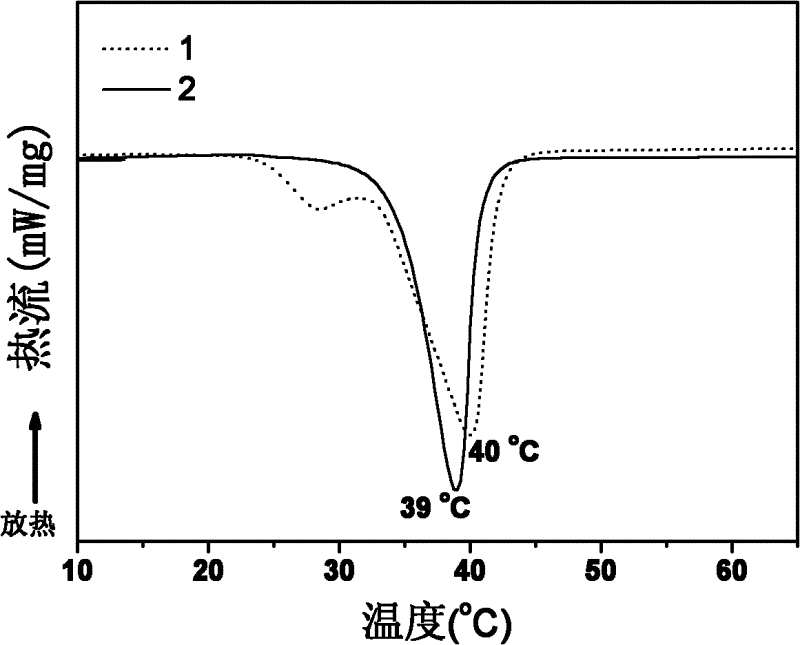Method for preparing alkyl polyoxyethylene ether acrylate or alkyl polyoxyethylene ether methacrylic ester
A technology of alkyl polyoxyethylene ether methacrylate and alkyl polyoxyethylene ether acrylate, which is applied in the field of preparation of polymerizable surfactants, can solve the problems of troublesome preparation of solid superacid and high cost of use, and achieve equipment Less corrosive, better quality, better yield and better quality
- Summary
- Abstract
- Description
- Claims
- Application Information
AI Technical Summary
Problems solved by technology
Method used
Image
Examples
Embodiment 1
[0034] Preparation of resin solid acid: Add 500 g of water and 5 g of gelatin into a 1 L three-necked flask, start stirring, and raise the temperature to 50° C. to dissolve the gelatin. Then add 100g styrene, 18g divinylbenzene (80wt%), 1.2gBPO and 85g liquid paraffin, heat up to 80°C for 3 hours, then heat up to 95°C for 1 hour, cool to room temperature, filter, wash with water, and dry Then get the white ball. Next, the porogen is extracted with petroleum ether, and cross-linked styrene-divinylbenzene resin white pellets with a diameter of 0.20-1.40 mm are screened out.
[0035] Take 100 g of the cross-linked styrene-divinylbenzene resin white pellets prepared above and put them in a 1L three-necked flask, swell with 100 g of dichloroethane for 2 hours, add 300 g of concentrated sulfuric acid while stirring, and heat up to 90 ° C for 4.5 hours under reflux , then heat up to 110°C to distill ethylene dichloride, then add dropwise 400g of oleum 30% and then insulate at 115°C ...
Embodiment 2
[0043] In a 500ml four-necked flask equipped with a stirrer, a thermometer and a water separator, add 150g of stearyl polyoxyethylene ether and 120g of cyclohexane, heat to dissolve, start stirring, keep the temperature at 80°C, and make the mixture azeotropic. Divide water until the distillate is clear.
[0044] Cool down to 45°C, then add 40g of acrylic acid, 0.2g of polymerization inhibitor hydroquinone, and 50g of resin solid acid catalyst (preparation method is the same as in Example 1) into the four-necked flask, heat, keep the internal temperature at 80°C, and use The reaction process was tested by thin-layer chromatography, and the developer was chloroform:isopropanol=3:1 (volume ratio). When no alkyl polyoxyethylene point was observed on the TLC spot plate, the reaction was terminated.
[0045] After the reaction is completed, cool to room temperature, filter under reduced pressure, and collect and reprocess the resin solid acid for future use. The filtrate was added...
Embodiment 3
[0047] Preparation of resin solid acid: Add 500 g of water and 5 g of gelatin into a 1 L three-necked flask, start stirring, and raise the temperature to 50° C. to dissolve the gelatin. Then add 120g styrene, 14g divinylbenzene (80wt%), 1.4gBPO and 95g liquid paraffin, heat up to 80°C for 3 hours, then heat up to 95°C for 1 hour, cool to room temperature, filter, wash with water, and dry Then get the white ball. Next, the porogen is extracted with petroleum ether, and cross-linked styrene-divinylbenzene resin white pellets with a diameter of 0.20-1.40 mm are screened out.
[0048] The above-mentioned cross-linked styrene-divinylbenzene resin white beads obtained are sulfonated according to the method of example 1, and the performance of the resin acid catalyst obtained at last is: the total exchange capacity of mass is 5.35mmol / g [H + ], with an average pore size of 46nm and an average particle size of 0.8mm, brown spherical polymer particles with sulfonic acid groups.
[00...
PUM
| Property | Measurement | Unit |
|---|---|---|
| pore size | aaaaa | aaaaa |
| particle size | aaaaa | aaaaa |
| pore size | aaaaa | aaaaa |
Abstract
Description
Claims
Application Information
 Login to View More
Login to View More - Generate Ideas
- Intellectual Property
- Life Sciences
- Materials
- Tech Scout
- Unparalleled Data Quality
- Higher Quality Content
- 60% Fewer Hallucinations
Browse by: Latest US Patents, China's latest patents, Technical Efficacy Thesaurus, Application Domain, Technology Topic, Popular Technical Reports.
© 2025 PatSnap. All rights reserved.Legal|Privacy policy|Modern Slavery Act Transparency Statement|Sitemap|About US| Contact US: help@patsnap.com



